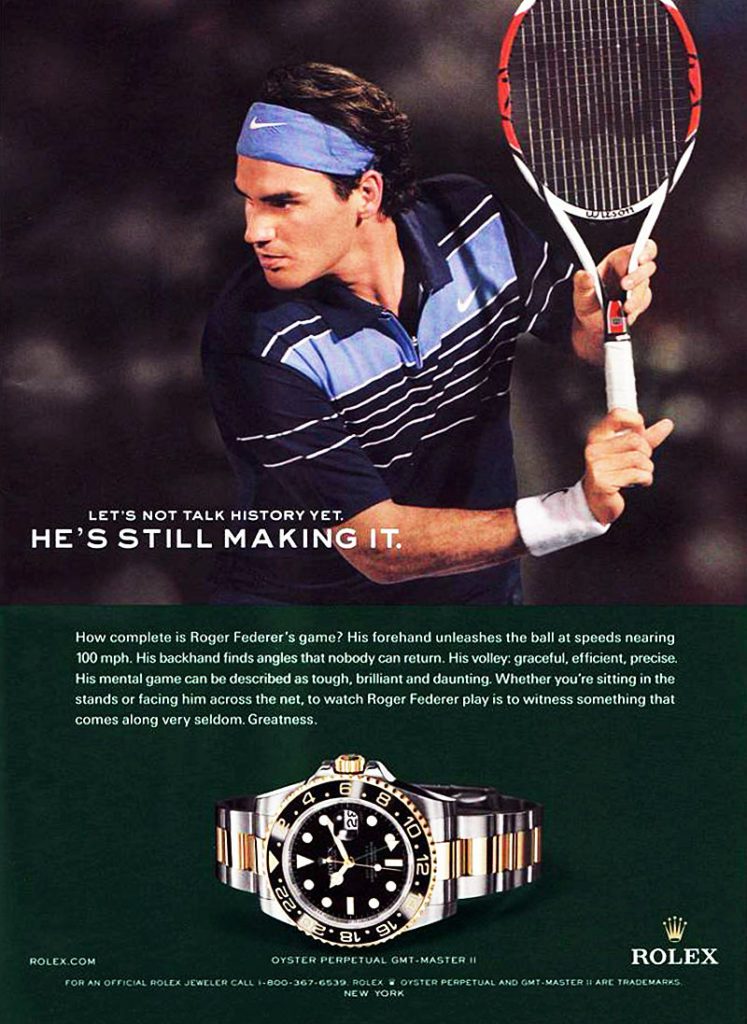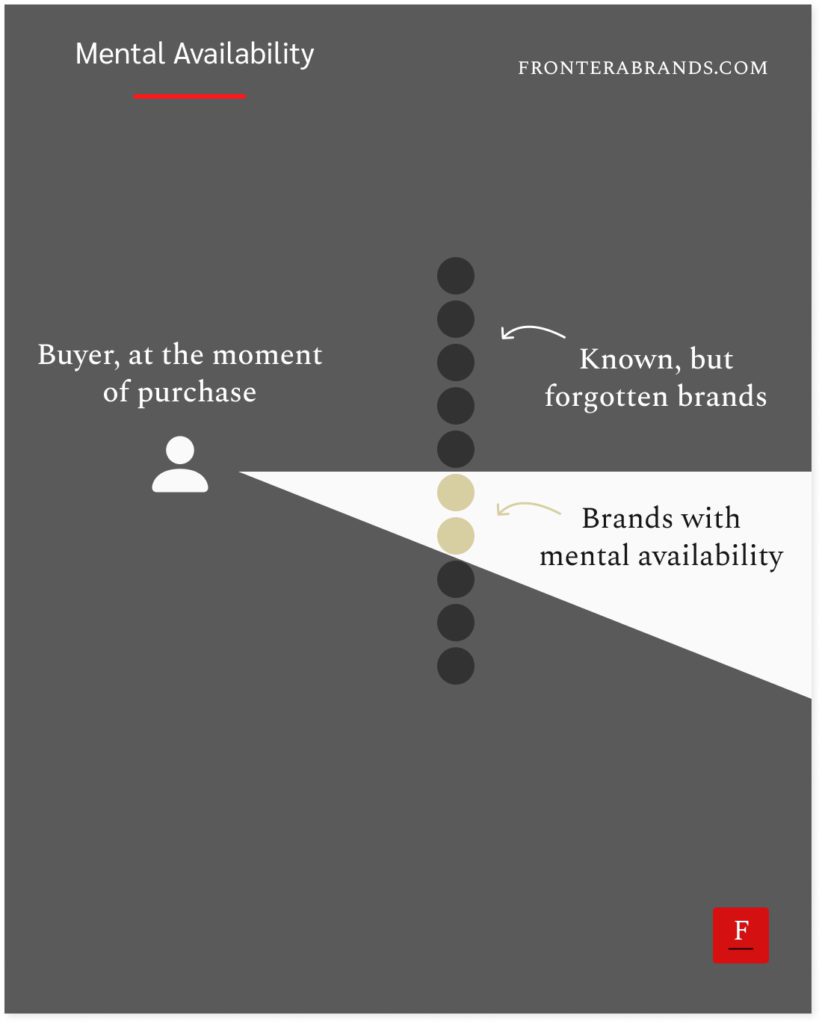In 2008, the financial crisis hit the US.
People lost their jobs.
Banks went bankrupt.
Everybody thought the global financial system was about to collapse.
And guess what people stopped buying in such an environment?
Yes, luxury products.
So luxury watchmakers also went into a crisis like many other industries.
People didn’t buy expensive watches anymore.
So brands like Omega, Tag Heuer, and Cartier cut their advertising budgets.
There was one exception: Rolex.
Nobody was buying Rolex watches just like the other brands.
But Rolex didn’t stop advertising.
They even increased their budget and advertised more aggressively than they had ever done.
The executives of the other watchmakers probably thought they were crazy.
Wasting money on advertising in the middle of a global crisis?
What are they even thinking?

In a few years, the crisis ended.
Uncertainty was over.
People had money to spend on luxury again.
So all luxury watchmakers went back to advertising.
But something unexpected happened.
Rolex was a dominant luxury watchmaker in the US even before the crisis.
But now they were growing faster than ever.
Everybody was back to advertising.
But somehow only Rolex was selling more and more.
Turns out, Rolex’s executives understood how people make purchase decisions better than others.
They knew the crisis was going to finish one day or another.
People were going to buy luxury again.
So even though advertising didn’t drive sales during the crisis, they used it to keep Rolex in people’s minds.
And they strengthened all the brand associations they wanted to build.
When the crisis was over, the other brands were non-existent in people’s minds.
So they bought Rolex.
Rolex executives refer back to that time as one of the milestones that made the brand what it is today.
When mental availability turns into sales
Listen to this.
Reporters asked why mountaineer George Mallory wanted to climb Mount Everest.
You know what he said?
“Because it’s there.”
The mere existence of the mountain was enough to make him risk his life and climb it.
Rolex’s ads during the crisis also served the same purpose.
It kept the brand top of mind when nobody was buying.
But when people were ready to buy, Rolex was “there.”
So Rolex’s mental availability turned into sales.
The mental availability idea in marketing comes from availability bias in psychology[1].
What occupies our minds shapes our opinions — hence our decisions.
If you see the news all the time about crime, you’d think the crime rate is going higher.
Even though it might be falling in your city.
And it might affect who you vote for in the next election.
So ideas that fill our minds shape our opinions.
And sometimes those ideas are from a brand.

The key point about mental availability is this:
Most people who know about your business won’t be ready to buy from you today.
No matter how hard you try to “convert”, you’d fail.
They become ready to buy only when a buying trigger occurs in their lives.
Because only then the pain (or desire) becomes unbearable.
So if you are available in their minds at that moment, you drastically increase the chances of a sale.
Now the question comes.
If mental availability is that important, how can you build it as much as possible with your brand?
Three ways to build (and keep) mental availability for your brand:
1. Change the way you see the “funnel”
One discussion has been ongoing in the marketing world for more than 50 years.
What is more effective: direct response or brand marketing?
Should you chase direct conversions to sell today?
Or should you build your brand in customers’ minds over time?
Well, the best answer is both.
Let me explain something interesting I noticed while looking into our data.
There are two groups of clients.
The first group contacts us (to work together) in the first few days of finding out about us.
The second group receives our newsletters around 6 to 12 months, they understand how we think and the problems we solve, and then get in touch when the moment is right.
The first group is actively looking.
They have an urgent problem to solve — so they are ready to buy.
The second group doesn’t have an urgent problem.
But the problem eventually appears (or becomes urgent) in their business.
As they get newsletters regularly, Frontera is top of mind.
So they see one of the invitations to work together and fill out the contact form.
And the second group is much larger than the first one.
You see where I’m getting at?
If you try to focus all your marketing on converting today, you’ll lose huge sales potential in the future.
Just like all luxury watchmakers (except Rolex) did during the 2008 crisis.
So if your funnel is mainly designed to convert buyers who want to buy today, you are leaving a lot of money on the table.
See your funnel also as a tool to build (and keep) mental availability.
Only then can you drastically grow your sales in time.
2. Become distinct
We talked about the importance of salience before.
People pay attention to things that break patterns.
If there is an apple on a stand full of lemons, that apple catches your attention.
So lemons get forgotten.
And that single apple captures a space in your mind.
Another example.
Some events have an extremely low probability of occurring in our lives.
Like school shootings, shark attacks, and plane crashes.
But they occupy a space in our minds when we hear about them.
Why?
Because they are salient.
So your brand also has to become salient like sensational news.
How?
With a distinct message.
With a distinct tone of voice.
And a distinct visual brand identity.
So you can infiltrate customers’ minds more easily and occupy a space.
3. Invest in channels that keep you top of mind
Changing the way you see your funnel has a consequence.
What looked like a waste of money before is now an investment for a sale in the future.
That means you have to invest in channels that will keep you top of mind.
And change how you use some existing channels.
Like what?
A few examples:
- Advertising: Advertise not only for direct conversions but also for taking potential customers into your brand’s world (e.g. newsletter, events, resources). That also helps discover more cost-effective advertising channels.
- Sponsorships: Sponsoring an industry event might look like a waste of money. But if it’ll make your brand familiar to your target customers, it can become one of the best investments.
- Social media: Some brands try to use social media only as a sales channel. But it’s also the ideal channel for building (and keeping) mental availability. So invest in good content to deserve people’s attention. Even when it doesn’t drive immediate results, it will increase your future sales.
- Email marketing: Email is one of the most effective conversion channels. But it’s also perfect for keeping mental availability. So don’t see email only as a channel where you “convert” immediately. Build a newsletter that’s actually useful and worth subscribing to. Again, the majority of our clients come through this newsletter.
The moral of the story?
Your brand has to occupy a permanent place in customers’ minds.
So when they are ready to buy, you become the first choice.
And that requires a
People can’t buy from you if they don’t know about you.
But there is one more thing.
People also can’t buy from you if they know about you but don’t remember you.
–
Enjoyed this article?
Then you’ll love the How Brands Win Newsletter.
Get the “7 Positioning Sins That Cost B2B Brands Millions” guide when you join. It’s free.
References:
[1] Kahneman and Tversky coined the availability heuristic. Marketers like Philip Kotler, David Aaker, and Byron Sharp applied the idea in the marketing world.
